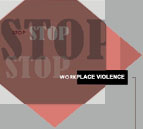WorkplaceViolence911
Search
User login
Access Control Comes of Age
Excerpt from the article entitled, ""New Route for Access Control"" by Michael A. Gips. Security Management, October, 1999, News and Trends, p. 15
Transparent employee verification has long been a goal of the access control industry. Many organizations are now looking at barrier-free optical turnstiles as a hassle-free form of access control that does not sacrifice security or convenience.
Optical turnstiles usually take the form of open lanes between pedestals or bollards. A person who passes through must flash a card at a sensor. Anyone trying to slip through without a card would trigger an alarm, activate a popout barrier, or cause doors beyond to lock. Thus, undetected tailgating is no longer possible.
""End users are realizing that [more traditional] access control doesn't give them anything,"" says Roy Bordes of The Bordes Group, Orlando, Florida. ""All it tells them is that a card went through a door, but the person might have held the door open for three friends."" Even with the optical turnstiles, a stolen card can, of course, be used by a
nonemployee, he points out, but at least there will be a record of the card's use.
About a dozen manufacturers make up the optical turnstile market, says John Strauchs, CPP, CEO of the Systech Group Inc., Reston, Virginia. At Designed Security, Inc., Bastrop, Texas, optical turnstiles account for about half of all business. Operations Manager Mark Crandall says that most buyers are large corporate facilities and federal agencies. Large organizations tend to have large lobbies, of course, and Strauchs says that a spacious lobby is a must for optical turnstiles.
Lower cost is fueling interest. Bordes says that optical turnstiles cost as much as $65,000 per portal three years ago, and the unit cost drop as the number of turnstiles purchased rises.
